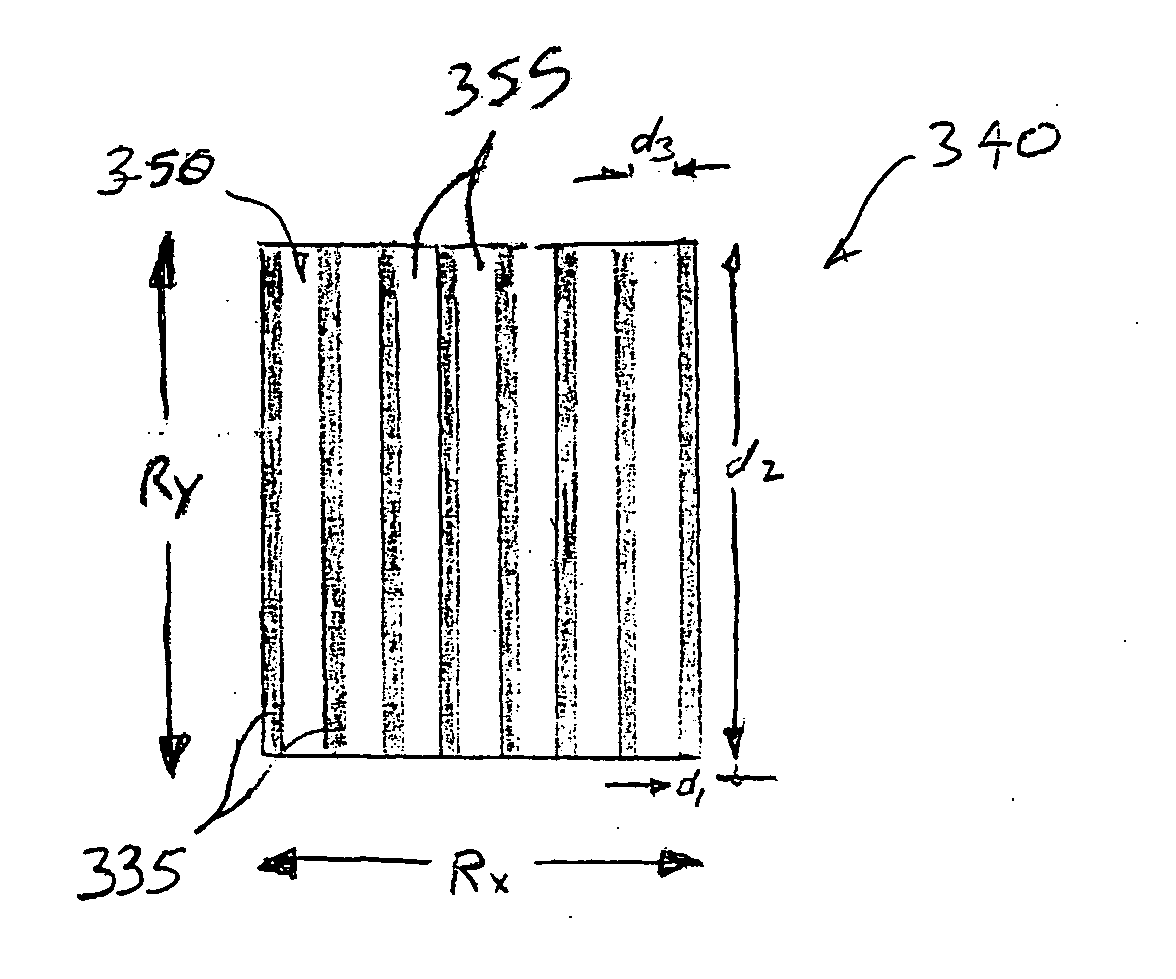Touch sensor with non-uniform resistive band
a resistive band and touch sensor technology, applied in the direction of instrumentation, pulse technique, keyboard-like device coding, etc., can solve the problems of unsuitable touch region, undesirable region around the electrode, exacerbate poor crossing, etc., to achieve the effect of reducing the fractional width of the electrically conductive elements, reducing the number of electrodes, and improving the quality of the touch sensor
- Summary
- Abstract
- Description
- Claims
- Application Information
AI Technical Summary
Benefits of technology
Problems solved by technology
Method used
Image
Examples
Embodiment Construction
Referring to FIG. 4, a resistive touchscreen system 100 constructed in accordance with a preferred embodiment of the present invention is described. The touchscreen system 100 generally comprises a touchscreen 105 (i.e., a touch sensor having a transparent substrate), controller electronics 110, and a display (not shown). The touchscreen system 100 is typically coupled to a host computer 115. Generally, the controller electronics 110 sends excitation signals to the touchscreen 105 and receives analog signals carrying touch information from the touchscreen 105. Specifically, the controller electronics 110 establishes a voltage gradient across the touchscreen 105. The voltages at the point of contact are representative of the position touched. The controller electronics 110 digitizes these voltages and transmits these digitized signals, or touch information in digital form based on these digitized signals, to the host computer 115 for processing.
Referring now to FIG. 5, the touchsc...
PUM
 Login to View More
Login to View More Abstract
Description
Claims
Application Information
 Login to View More
Login to View More - R&D
- Intellectual Property
- Life Sciences
- Materials
- Tech Scout
- Unparalleled Data Quality
- Higher Quality Content
- 60% Fewer Hallucinations
Browse by: Latest US Patents, China's latest patents, Technical Efficacy Thesaurus, Application Domain, Technology Topic, Popular Technical Reports.
© 2025 PatSnap. All rights reserved.Legal|Privacy policy|Modern Slavery Act Transparency Statement|Sitemap|About US| Contact US: help@patsnap.com



